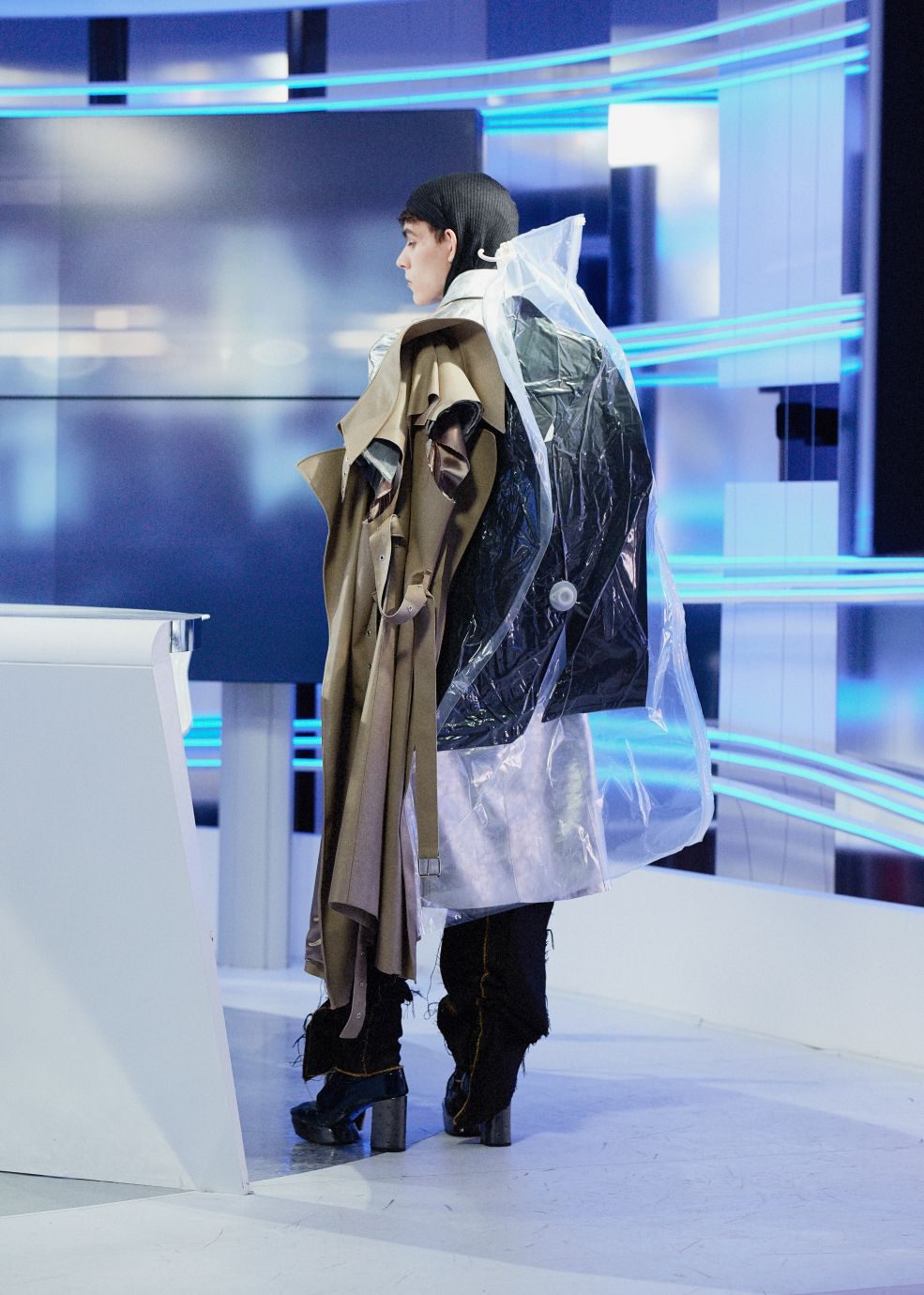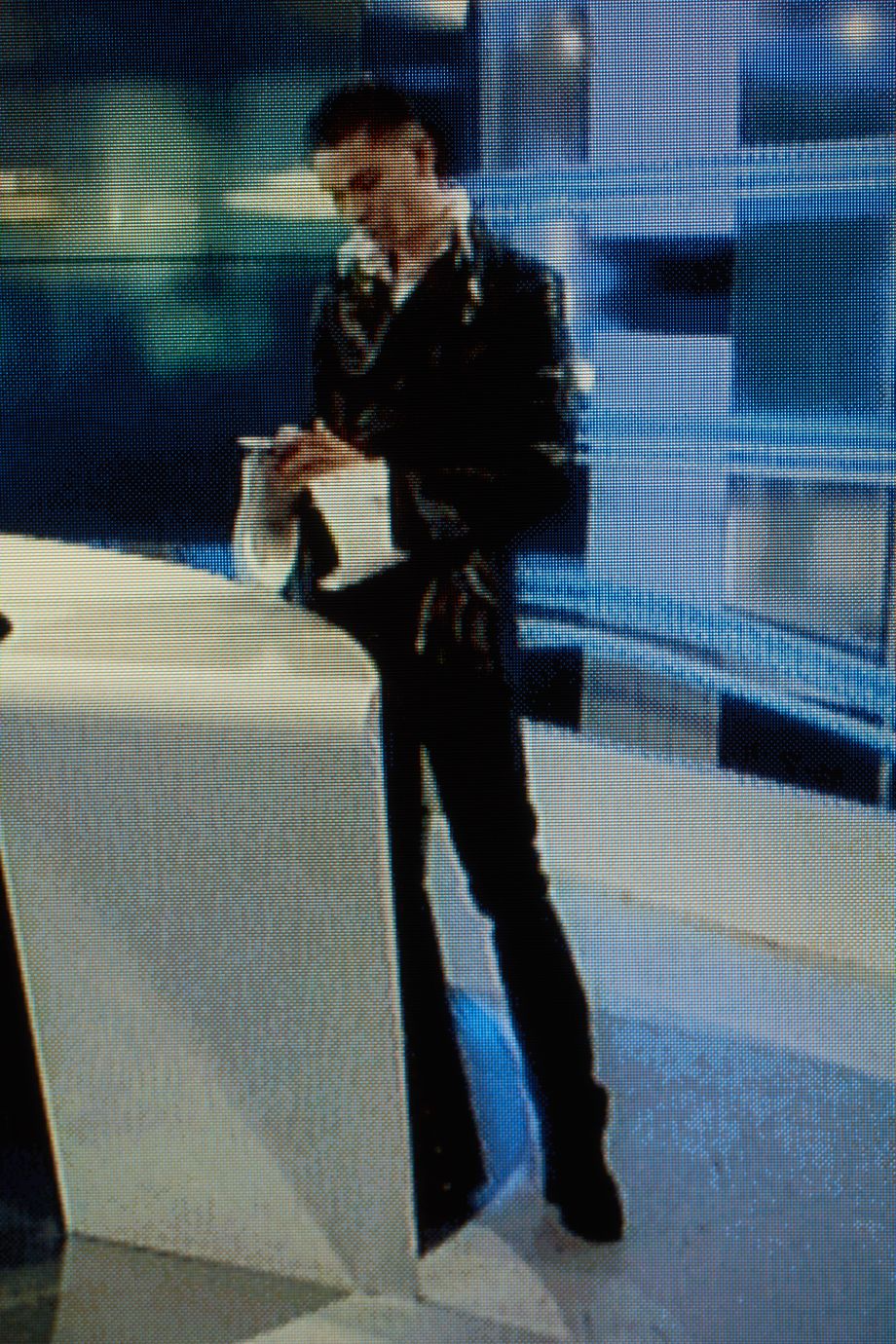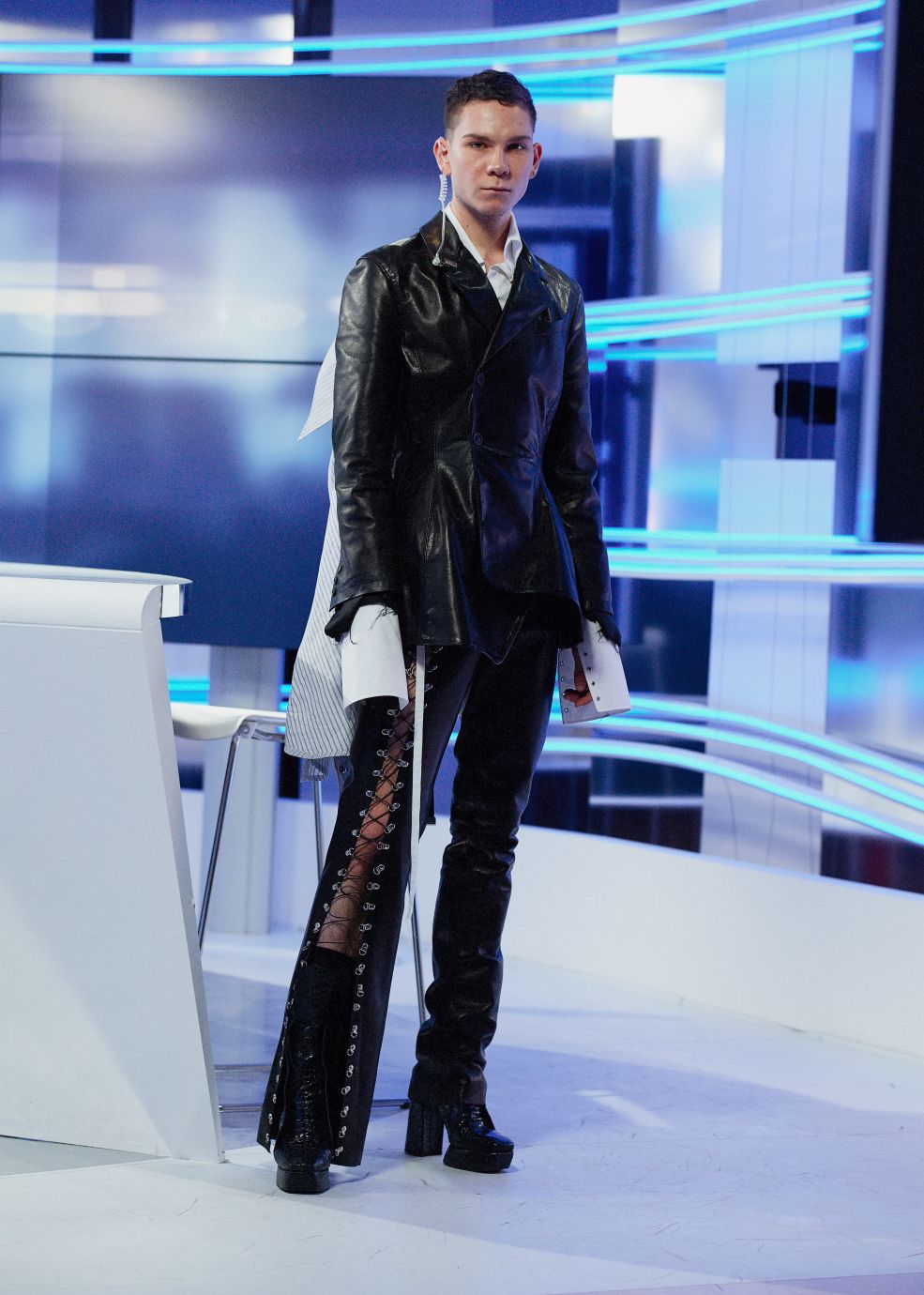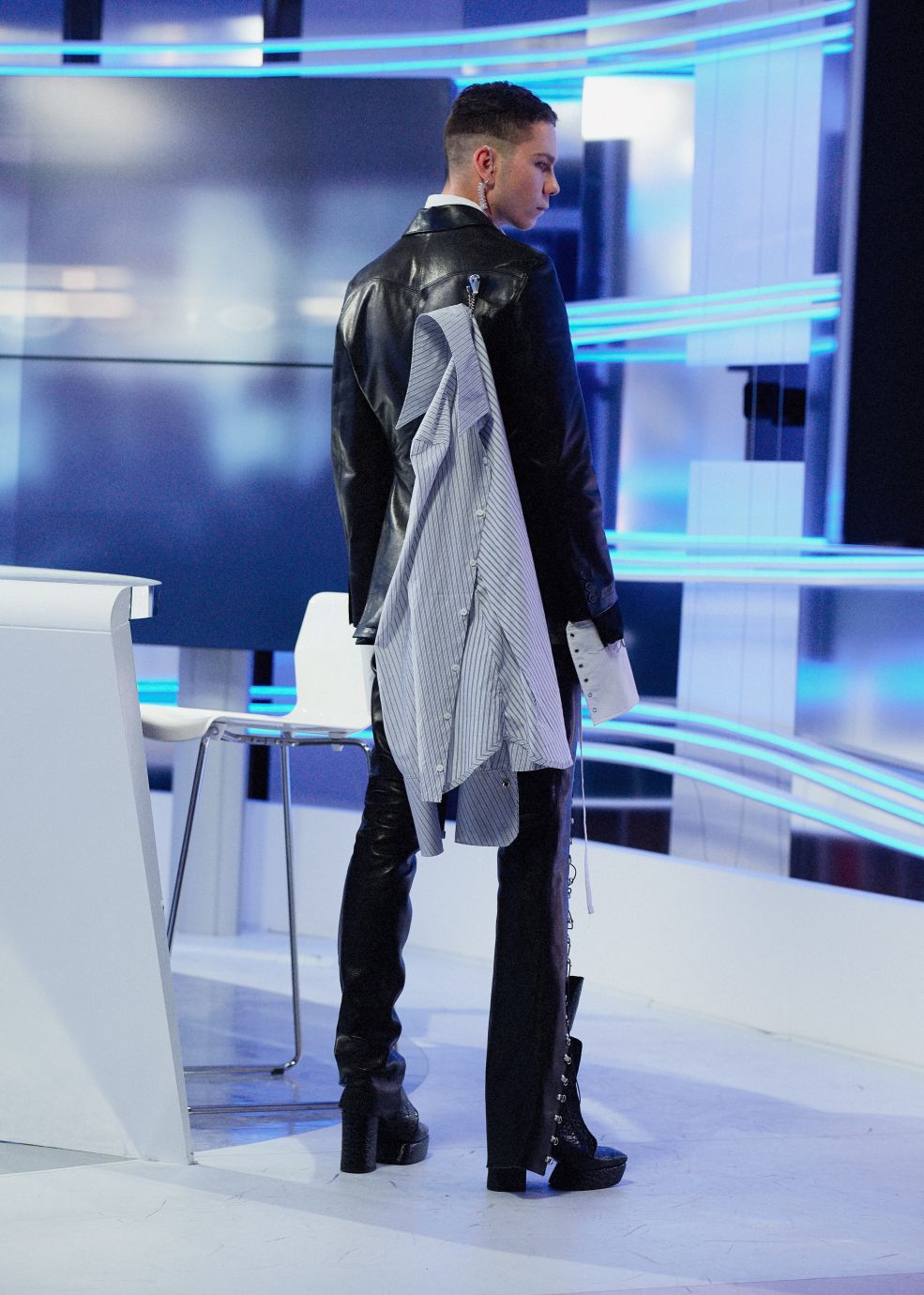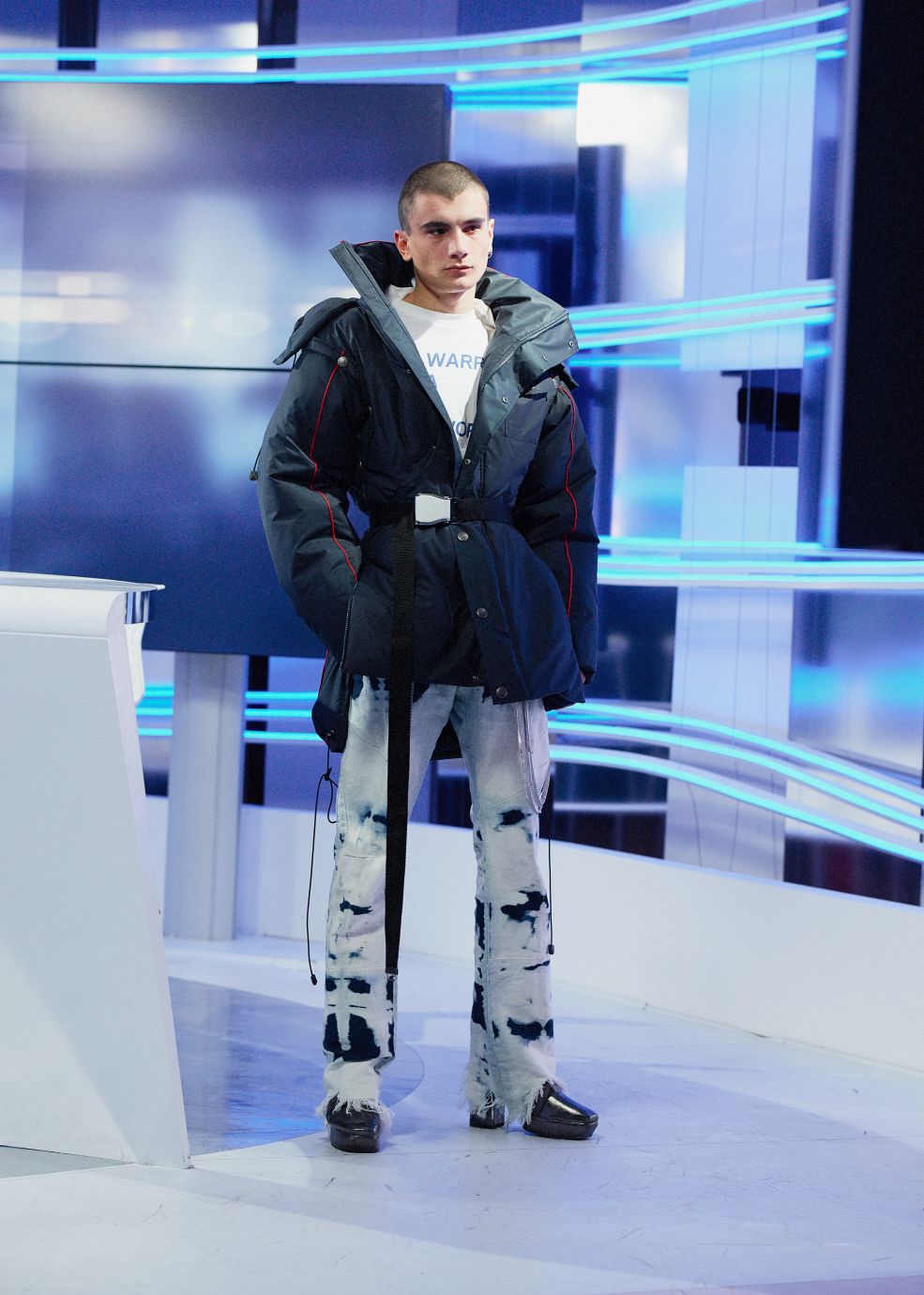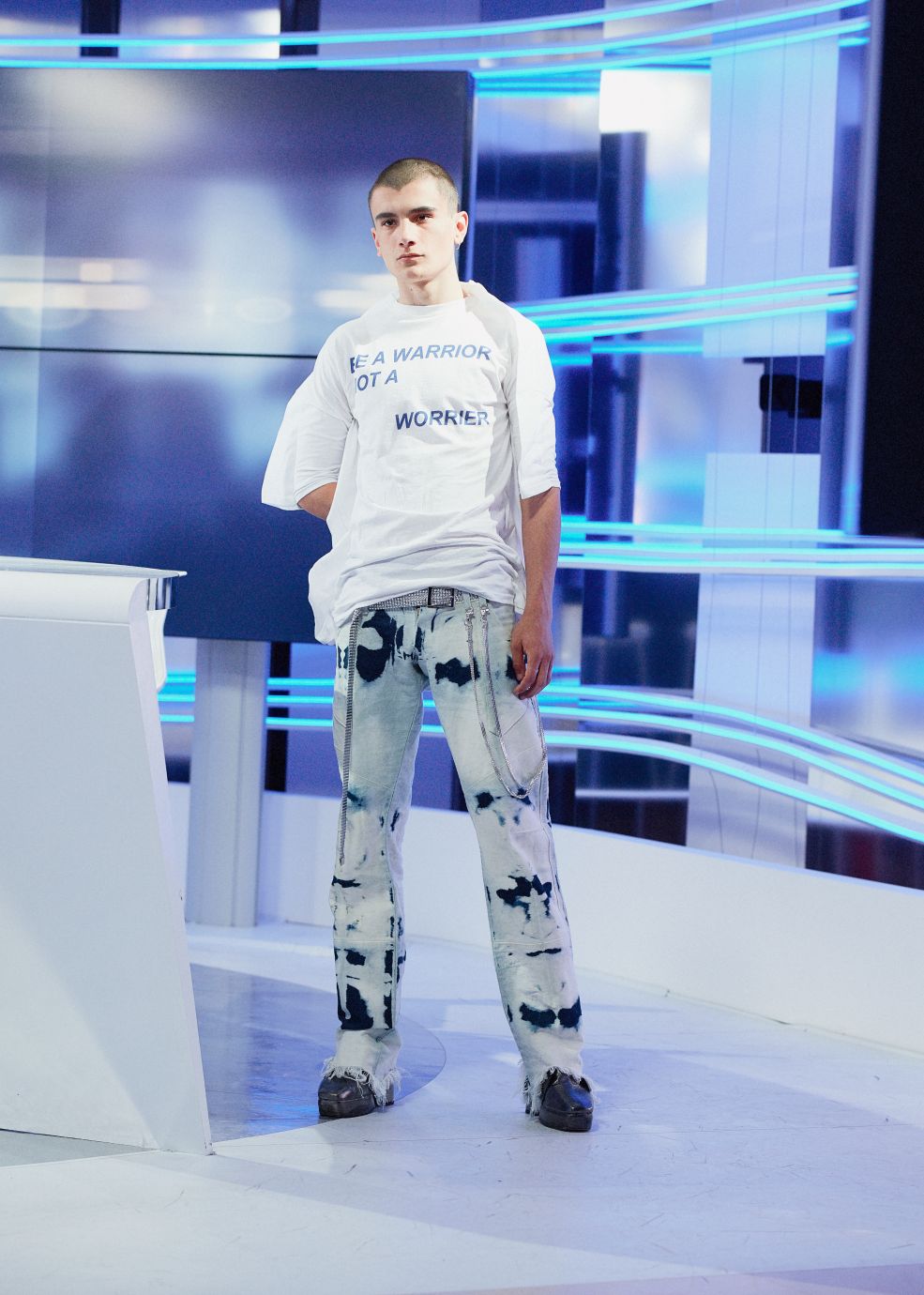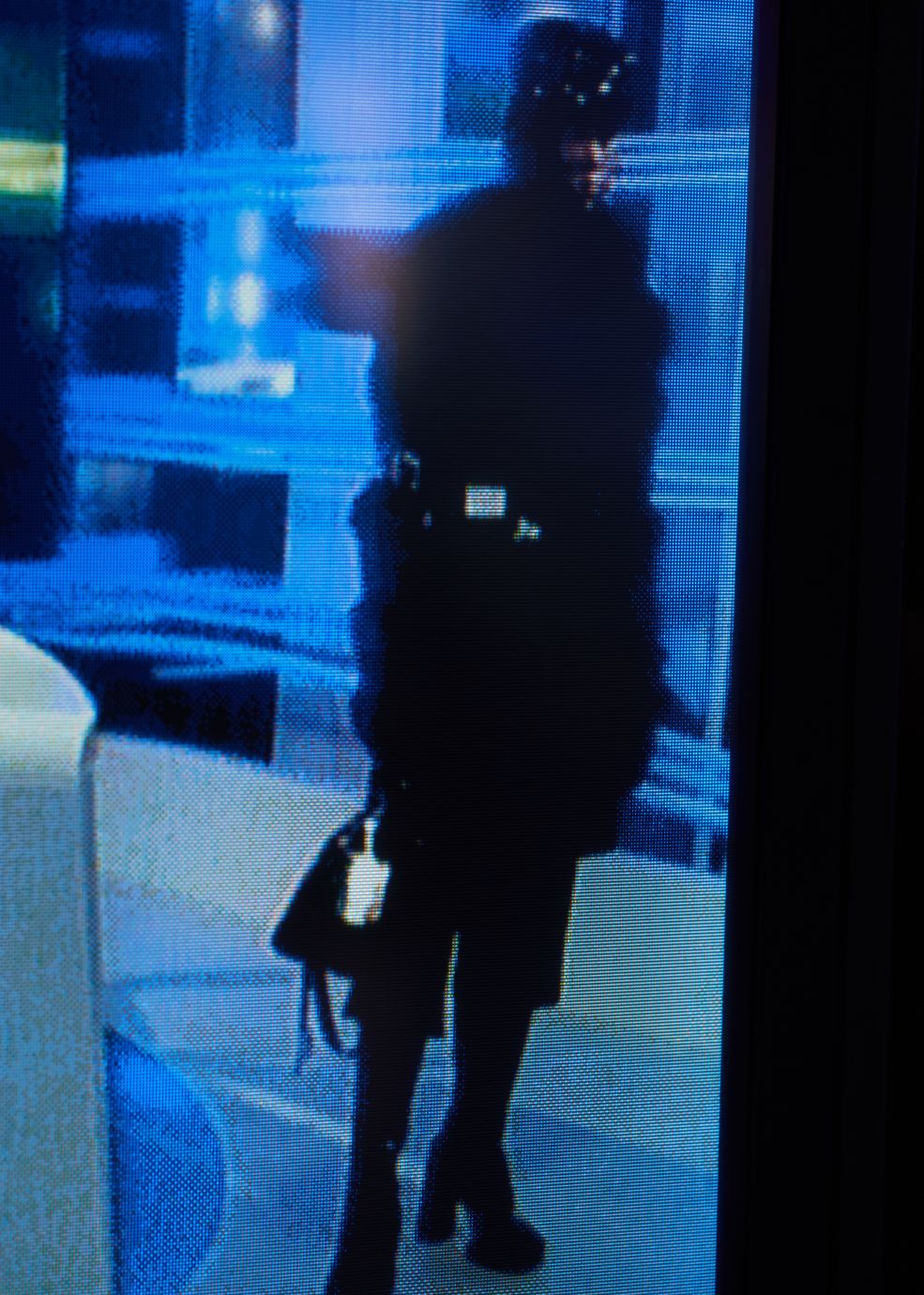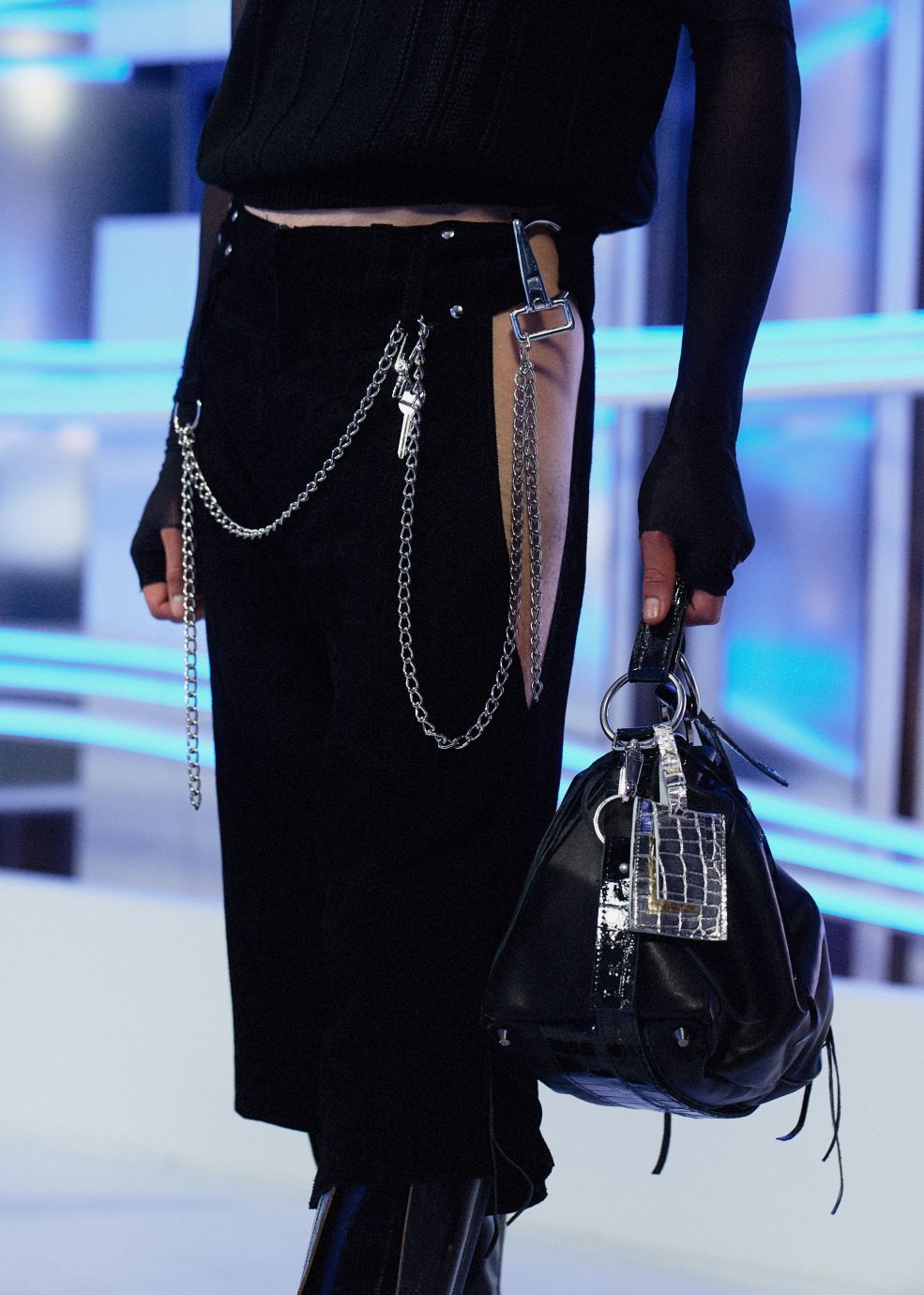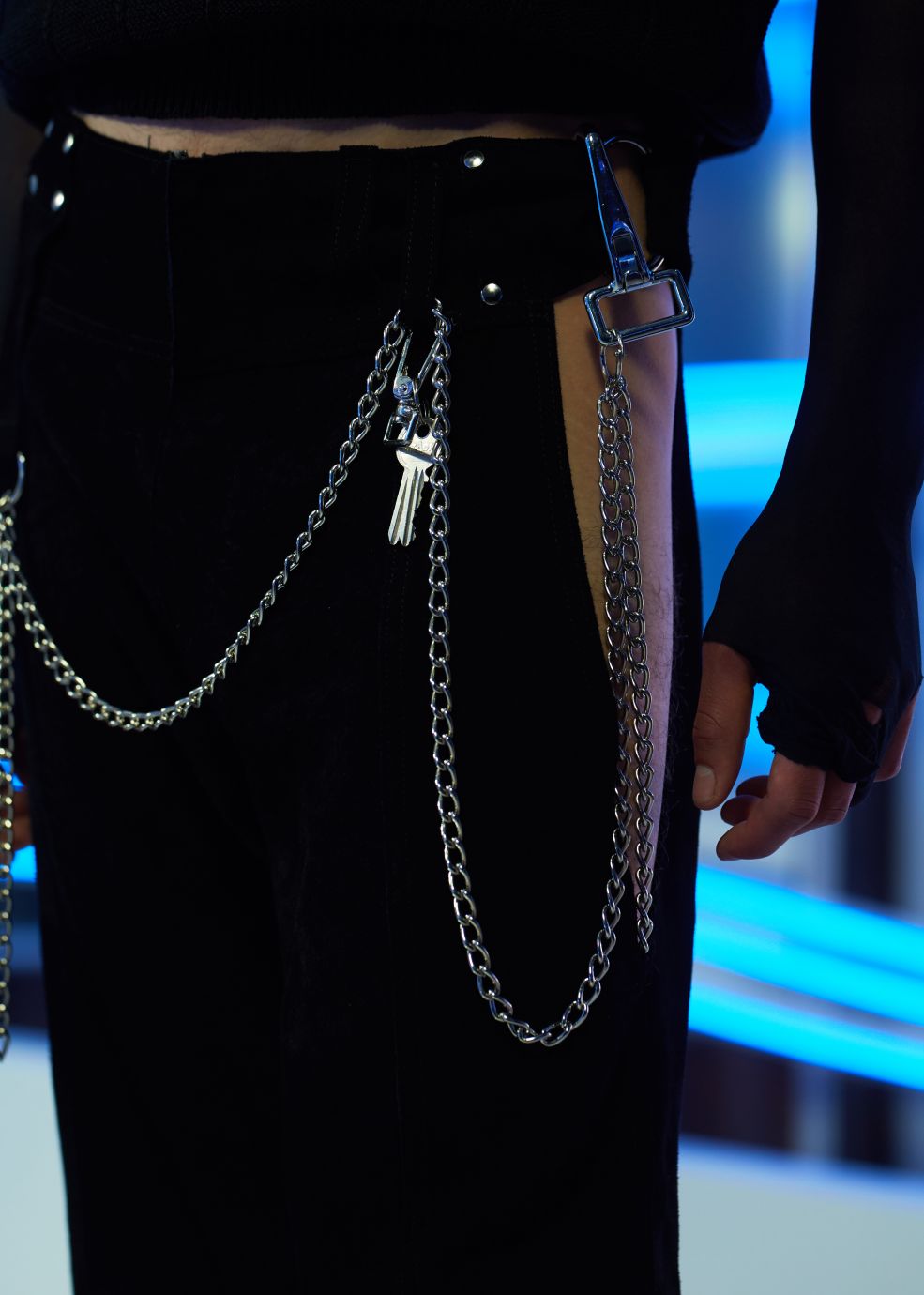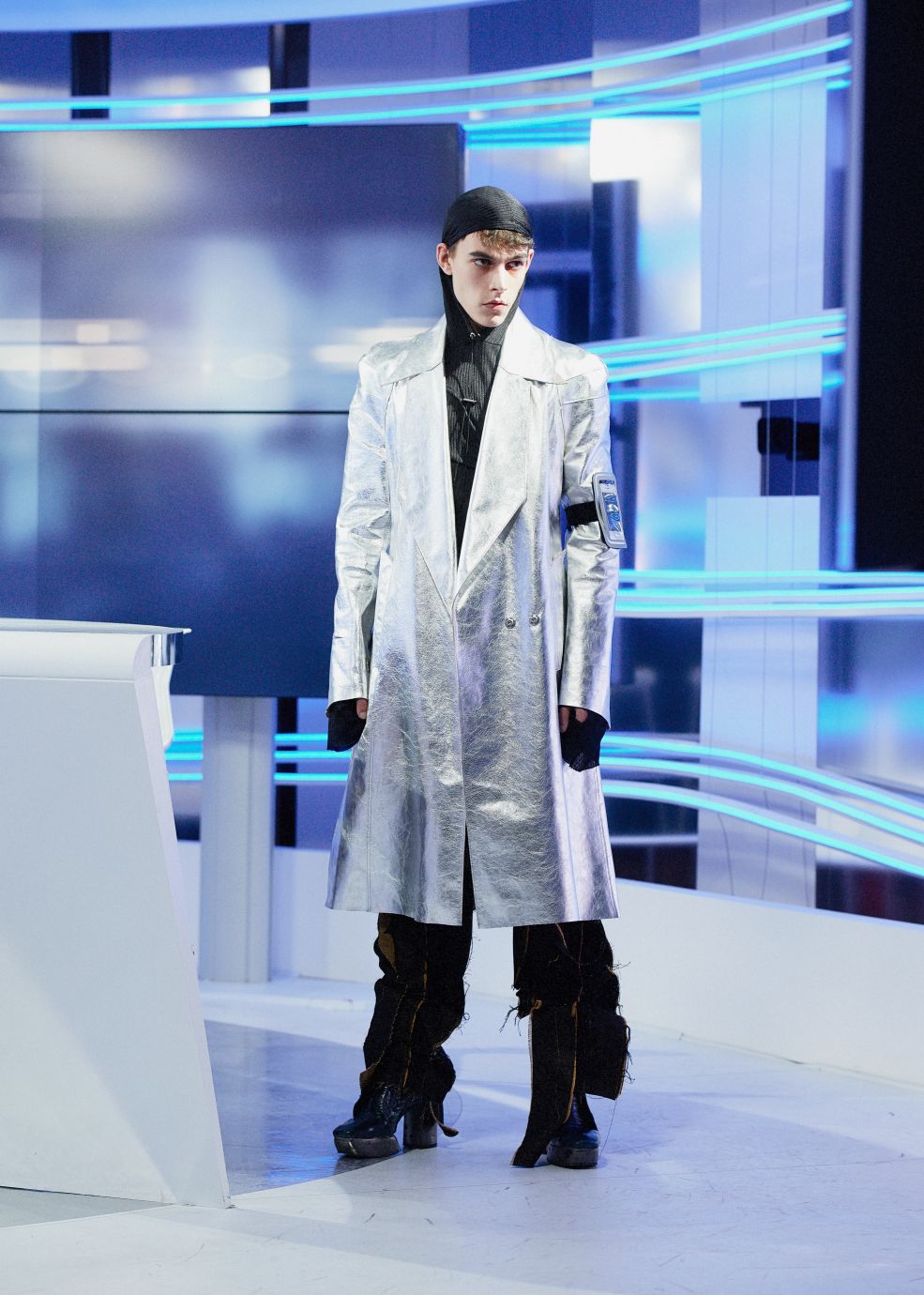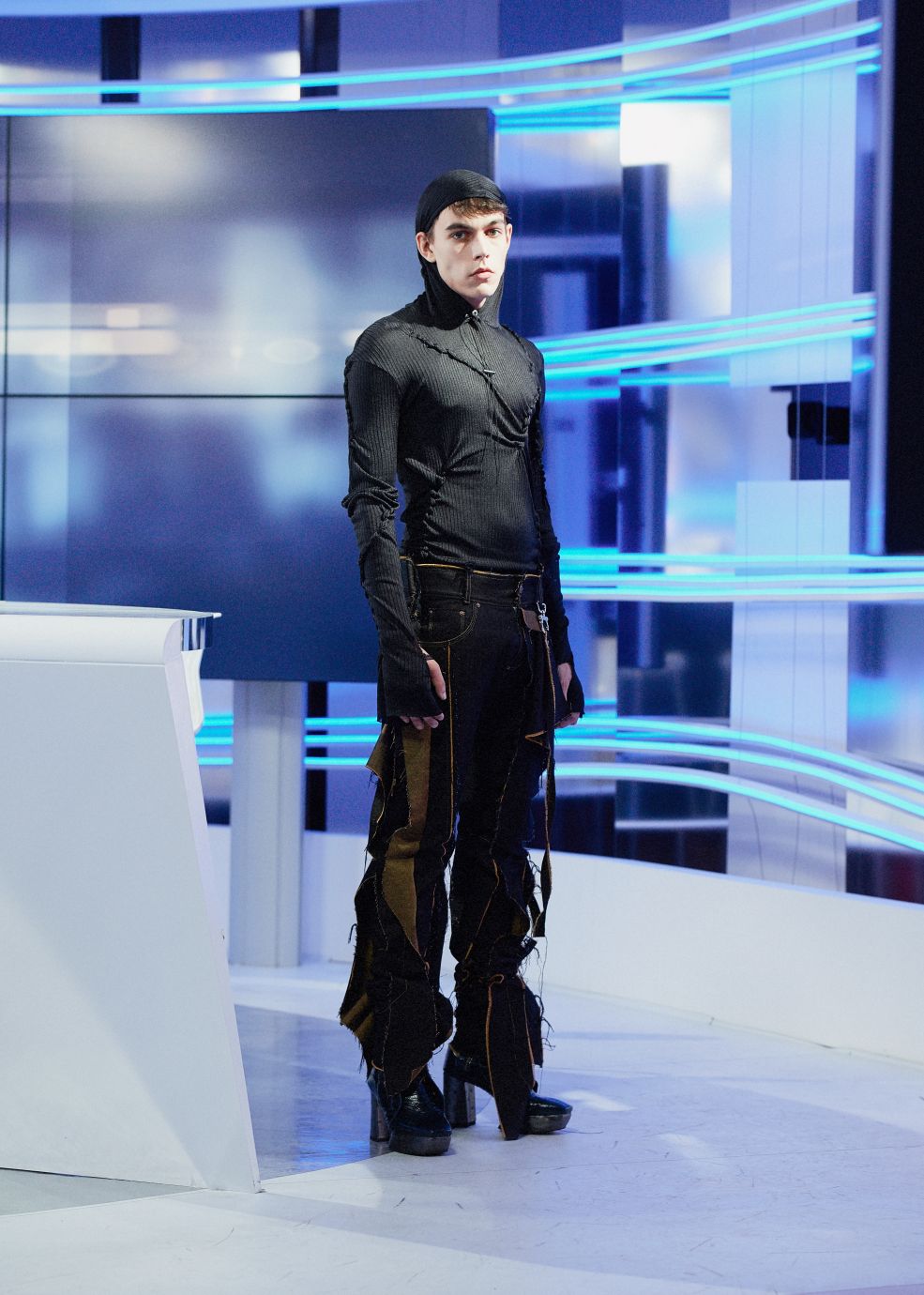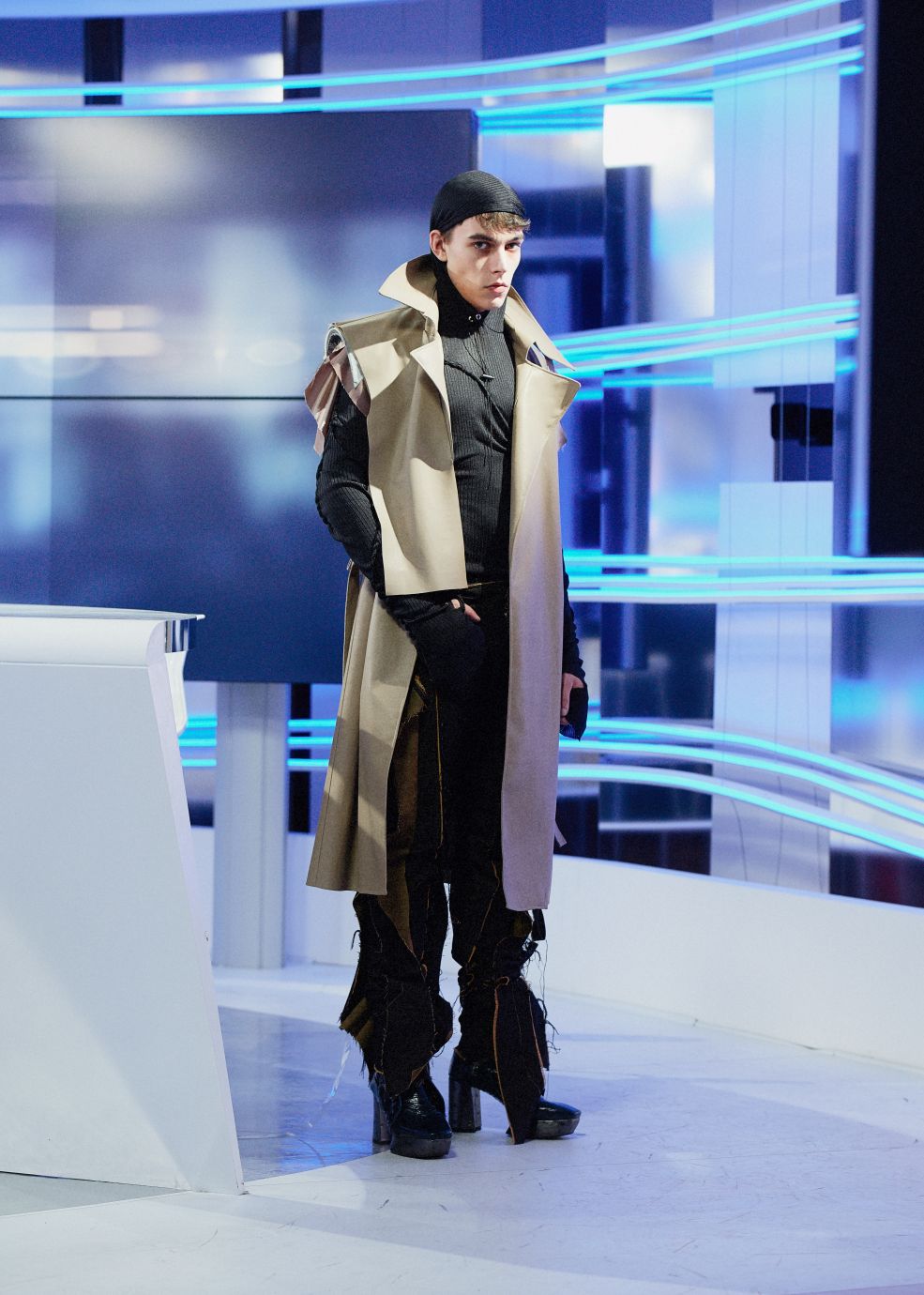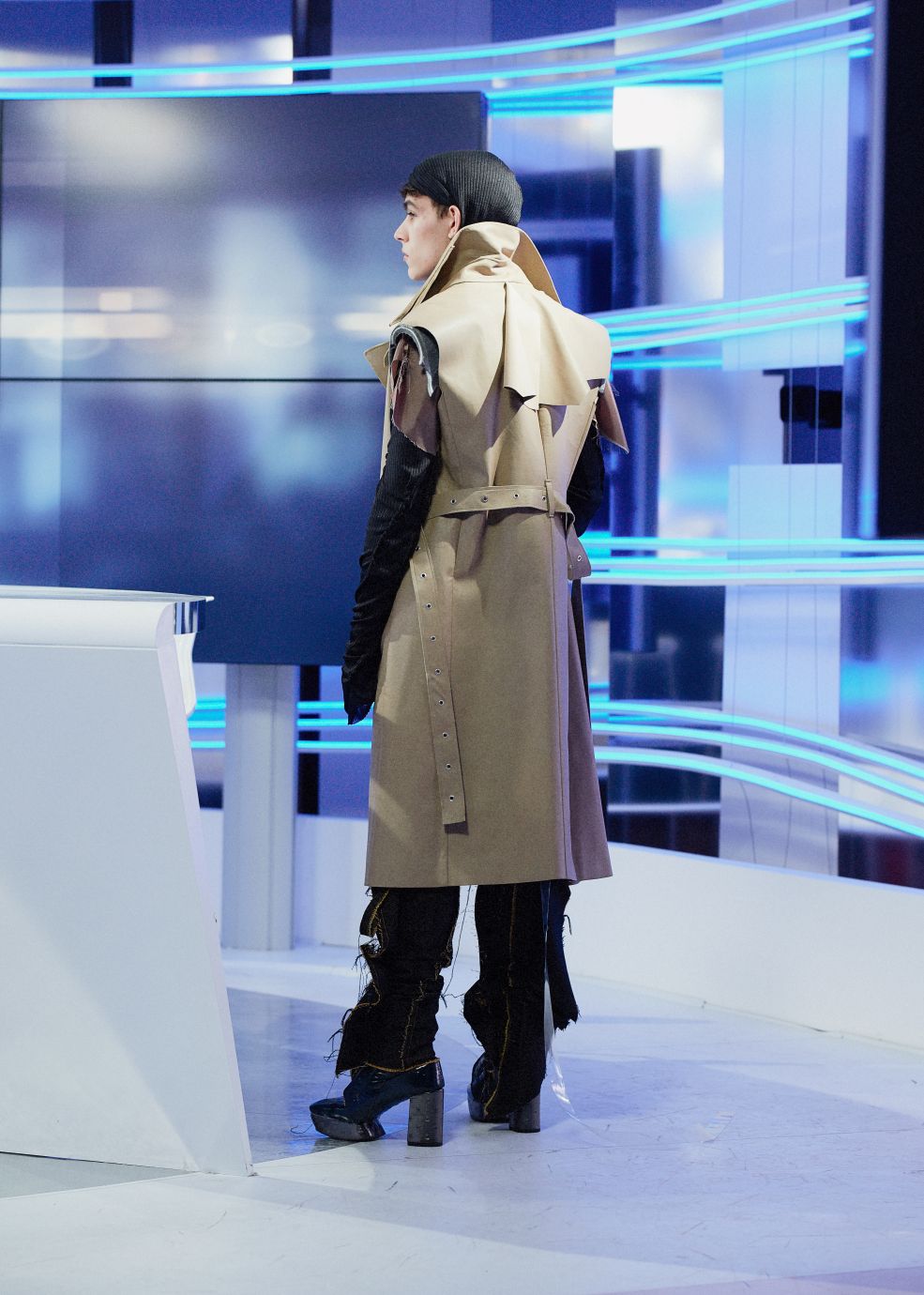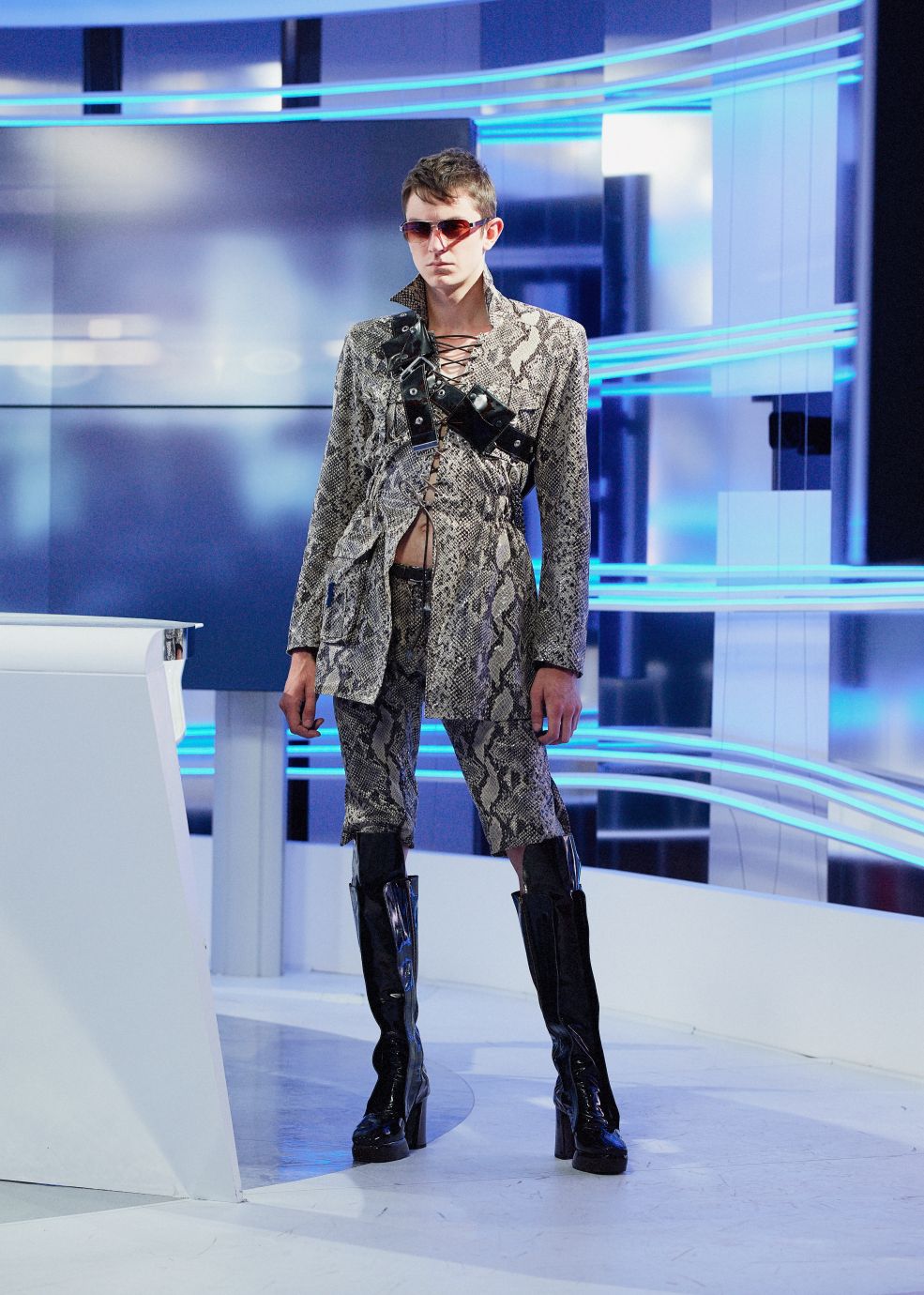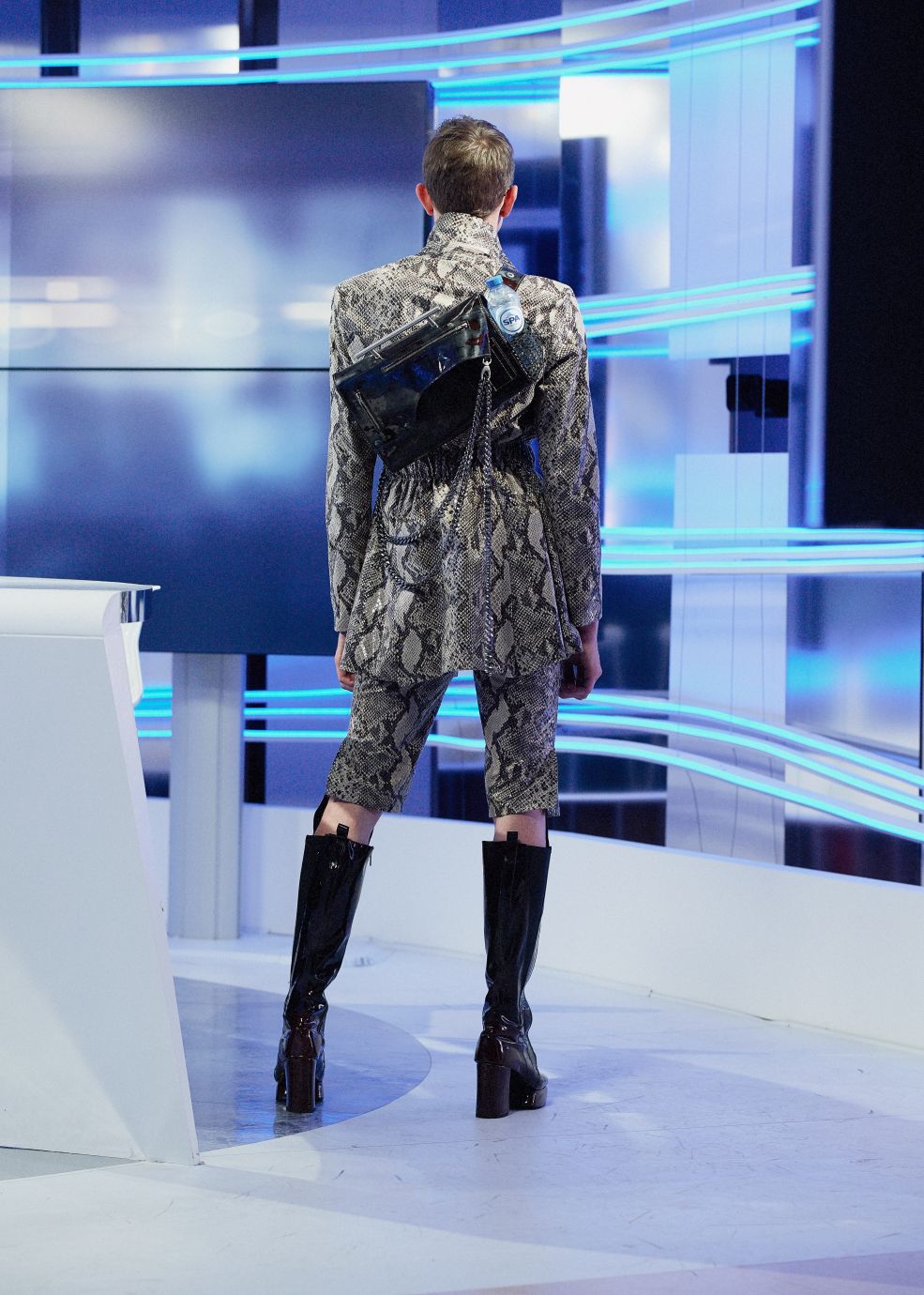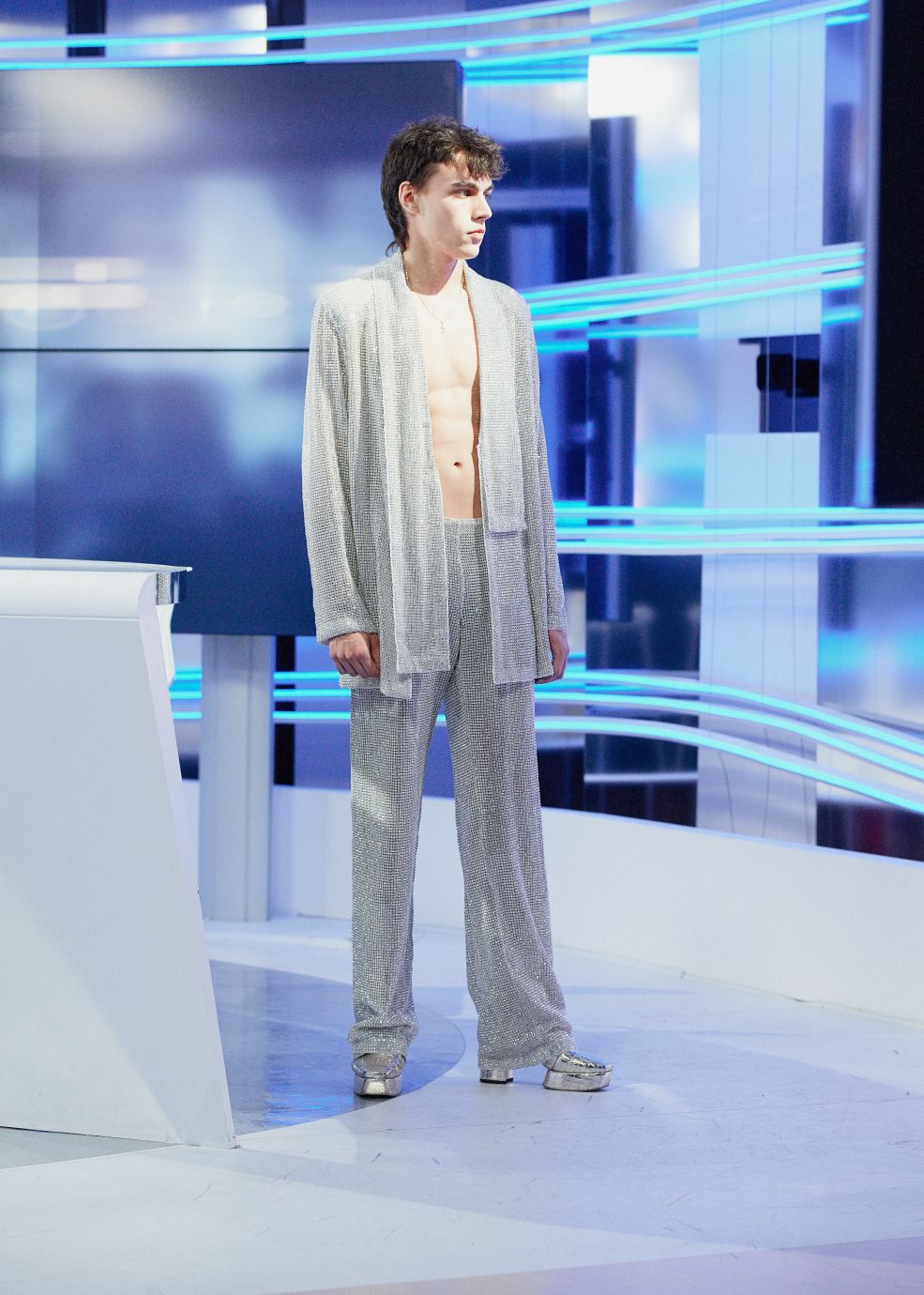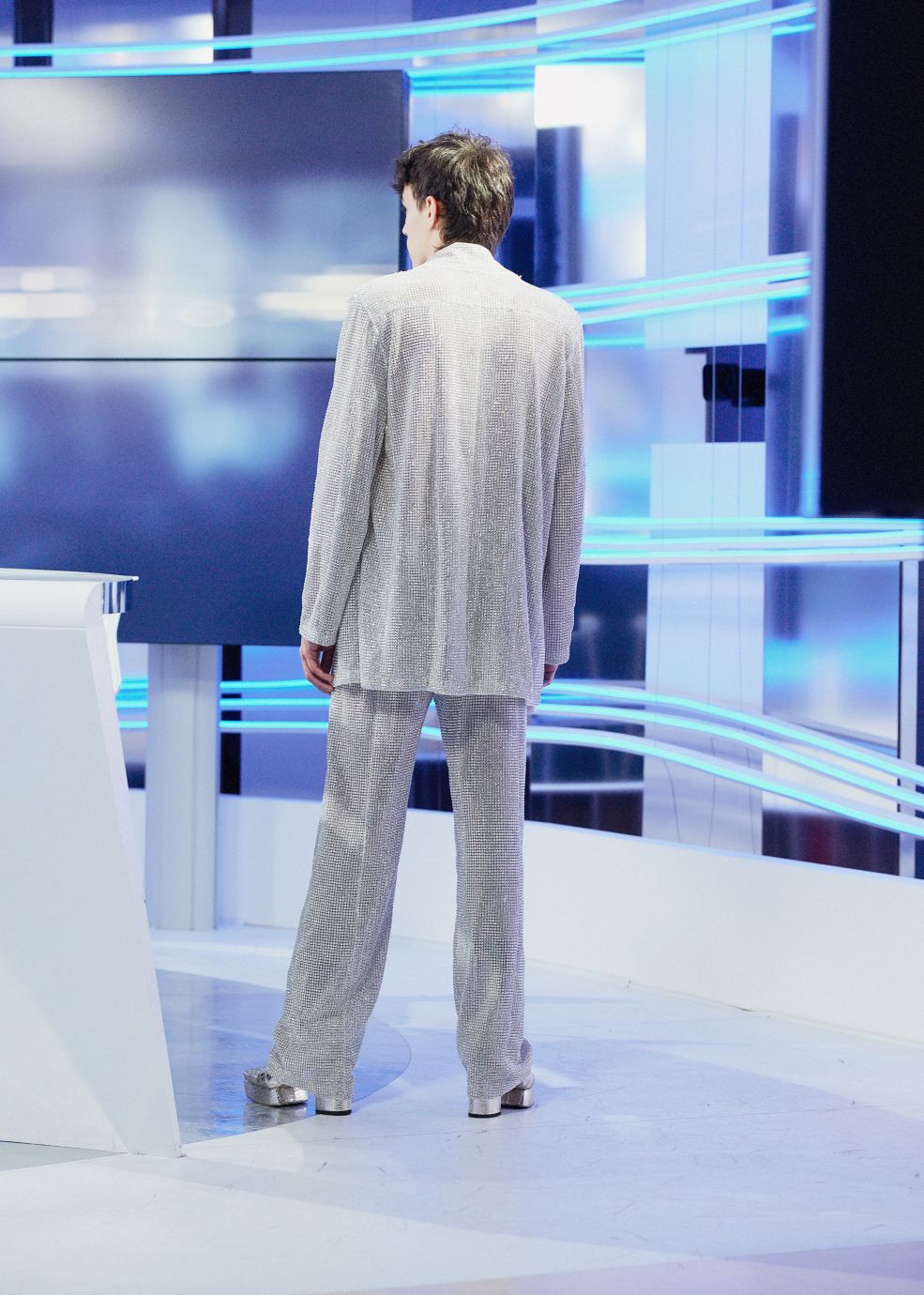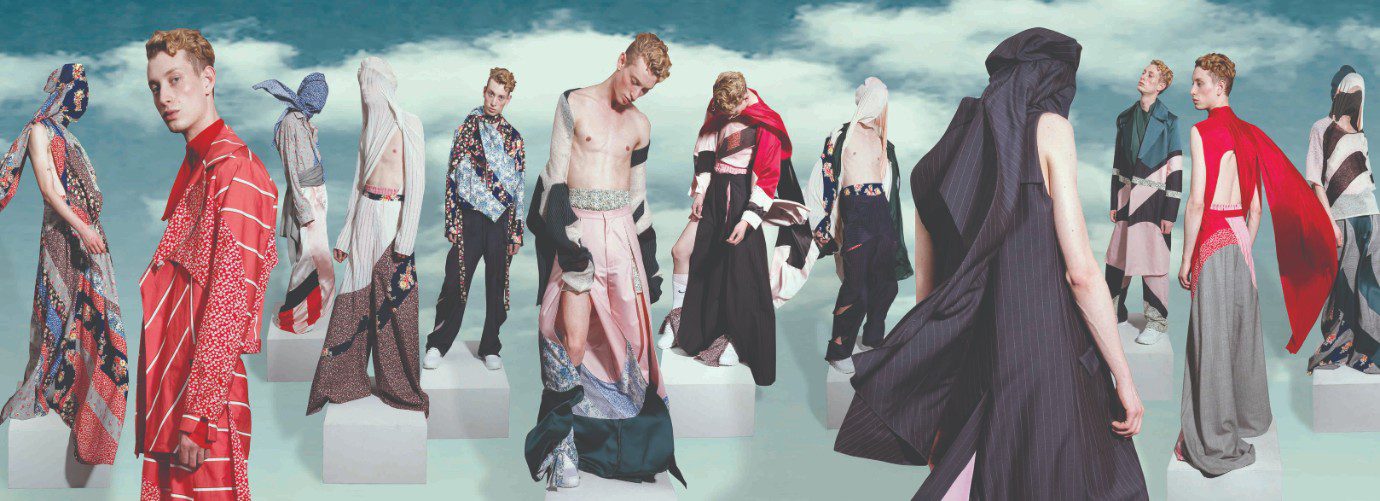What was the main inspiration behind your collection?
Last summer, I visited the “Energy Flash – The Rave Movement” exhibition at the M HKA in Antwerp, where I learned about Alexandra Domanovic.
During the 90’s, widespread internet use came on the heels of the collapse of socialism in Eastern Europe. Routes of global commerce multiplied parallel to the speed of information. From today’s standpoint, a world where capitalism and socialism coexist is associated with rhythms of life defined by slower forms of media. Alexandra Domanovic considers this condition through her own experience and the history of her native Yugoslavia in “19:30”. The title comes from the time slot of the Yugoslav nightly news, when the whole country would take time to view the broadcast.
Around 1995, techno became popular in the former Yugoslavia (a bit later than it did in the rest of the world, due in part to the international isolation and the warring republics) and young people crossed the new borders to attend parties and dance to wordless, repetitive techno – a musical genre free of national associations. When information can be accessed at any time, the nightly news loses the power to create a simultaneous, shared experience for a multitude of people. But a live event like a rave, still holds that power. “19:30” is an attempt to reconcile past and present. Domanovic traveled around former Yugoslavia to collect archival footage used in news casts. She reached out to techno DJ’s and produced a series of tracks using news samples. Through remixing and live performance, the old melodies become free, like bodies given over to dance.
How did this research relate to your collection?
Researching deeper into techno culture and its origins made me realise more than ever how important nightlife is for me and my creative process. The amount of energy, love and endless inspiration that I am exposed to in my nightlife is stronger than any source of information I was ever exposed to. It is this unique feeling that I translated into a collection existing out of 8 characters that represent my alter-egos inside of my own nightlife.
What techniques did you focus on?
I really put the focus on the cut of the pieces in this collection. Quality was something that I really wanted to achieve in every single piece. I made several wool coats and blazers, but the part that I enjoyed the most was the making and designing of the leather pieces. The amount of energy and skill that is needed to create a high quality leather garment is impressive. I learned so much about leather and how to treat during the making of this collection. I worked on a full horse leather suit, a leather fringe jacket, some coats and trousers and of course, shoes and handbags that are made out of fine leathers that I collected in Holland, Belgium and France.

